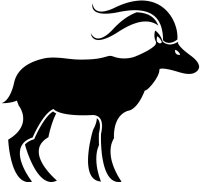Drort
Drort are domestic animals found throughout Anásthiasplugin-autotooltip__small plugin-autotooltip_bigAnásthias
Anásthias [a-NAS-thee-ass / ænæsθiːæs], or [an-ass-THEE-as] is an equatorial island continent, heart of the Civilised World. The north straddles the equator and is hot and humid, while most of the equatorial centre is an upland plateau with fertile river valleys, and stretches of arid plains and desert in the shadow of the mountains. The south is temperate but more wild, separated from the civilisations of the north by the almost impassable Harthera, seen pulling wagons and every type of commercial and domestic conveyance. Unusually for domestic livestock they are virid creatures, omnivorous and unusually tolerant to green grazing, nibbling viridplugin-autotooltip__small plugin-autotooltip_bigVirid
Referring to the Virid Kingdom of flora and fauna, toxic to human life. weeds and pests common in roadsides and hedgerows. They are rarely seen in Anrel due to the local virid taboo.
Faunaplugin-autotooltip__small plugin-autotooltip_bigFauna
List of animals of all kinds, both red-blooded and virid, domesticated and wild.
Subcategories
Articles
All
Red-blooded Fauna
Virid Fauna
topics sci1
 This is in a series of articles about Animalsplugin-autotooltip__small plugin-autotooltip_bigFauna
This is in a series of articles about Animalsplugin-autotooltip__small plugin-autotooltip_bigFauna
List of animals of all kinds, both red-blooded and virid, domesticated and wild.
Subcategories
Articles
All
Red-blooded Fauna
Virid Fauna
topics sci1.
Physiology
Drort are quadrupeds a with smooth, lightly scaled hide of various shades, and a pear-shaped body with thick strong hind legs and slimmer forelimbs.
In nature their skin tone is a camouflaged adaptation to local flora, varying from mottled greenplugin-autotooltip__small plugin-autotooltip_bigGreen
The Green Kingdom of flora and fauna includes humans, mammals, birds, whales, greenfish, and most green plants and crops cultivated by humankind.-brown to virid with coloured stripes, but most modern domestic varieties are bred for a more uniform tone. Some smaller desert breeds have a pearlescent sheen, an adaptation which helps keep them cool, while other breeds have thick hair-like tufts for colder climes.
Their back legs are strongly muscled with high haunches, and slimmer forelimbs with a hook-like dew claw. In nature this enables them to adopt a semi-upright position when sprinting, and to stand erect to strip foliage from trees, aided by their shorter forelimbs. When running they adopt a quadrupetal loping gait which is efficient for prolonged running.
Drort have a short vestigial tail, little more than an elongated triangular flap of skin which covers their anus and sex organs, though some mountain breeds have a hairy tail. At rest, drort are often seen sitting back on their large rumps with back legs splayed, a depiction popular in comic drawings and satires.
Most have long tongues and snouts, adaptations enabling them to lick sweet resin from trees, and to root out insects, grubs, plant shoots, eggs and small creatures. They are notoriously omniovorous and are known to sample a bite from anything, from human food to flapping laundry. They are descended from the smaller river-drort, semi-aquatic animals still found in rivers and wetlands.
Behaviour
Drorts are herd animals, in the wild led by an elder matriarch. Drort mews always have an experienced elder mare who keeps the younger animals under control, and assists in their training. They are considered more intelligent than most mammalian domestic livestock. Drort can easily be taught to perform various tasks, and are placid, loyal and reliable if treated respectfully. However, badly trained and mistreated drort can be violent and dangerous, lashing out with kicks from their powerful hind legs and slashes from the dewclaws. For this reason many commercial drort are declawed, though in some cultures this is often seen as a sign of poor stabling.
Breeds
Selective breeding has created many varieties, selected for size, strength, abilities and temperament. The heaviest breeds are the drays: large, with strong haunches, larger front legs, and a short wide snout. The most common variety are simply called mounts, large enough to carry a man comfortably, and used to pull light carriages. Heavy mounts are called destriers, larger, darker and more muscled, mainly used as military cavalry. Some destrier breeds have vicious dew-claws, enabling them to gash infantry during battle.
The lightest breeds are the jennets, with delicate forelimbs and smooth pale skin, enabling them to adopt an elegant half-erect gait often portrayed on coats of arms. They were bred as couriers and for racing, being small, fast and light, but today they are primarily ridden by the rich, and by aristocratic ladies. The finest variety of jennet is the Retthen White, a Saloyan breed who are traditionally trained to adopt an elegant high-stepping gait.
